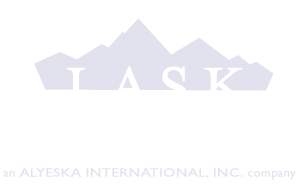Intro to Standard MDD Treatment Options
Major Depressive Disorder (MDD) is a crippling condition which pervades every conceivable aspect of your life. Treatment options for MDD and other anxiety-related disorders typically consist of a combination of health and wellness counseling, medication with SSRIs (Paxil, Zoloft, Prozac, Lexapro, and Celexa), or another form of medication such as SNRIs (Cymbalta, Effexor, Fetzima, and Pristiq). Traditional treatment regimens favor the eclectic approach – therapy + antidepressants.
Effective on the majority of people, this cocktail of treatments is prescribed to tackle depressive disorders and rebalance the chemical elements in the brain. Ongoing therapy serves an important purpose in depressed patients, by providing the necessary mental health support for getting through depressive episodes and gradually rebuilding a positive frame of mind. When therapy is meted out, in tandem with appropriate medication, depression can be controlled or managed in many patients. Whether it is remission or a lessening of depressive symptoms, this combination has proven to be effective for many years.
However, there are patients who do not respond well to the aforementioned MDD treatment regimen. These patients receive minimal benefit from the combination of therapy and antidepressants. Fortunately, there are highly effective alternatives to treating Major Depressive Disorder and other anxiety-related disorders (Social Anxiety Disorder, Post-Traumatic Stress Disorder, Generalized Anxiety Disorder, and Panic Disorder). While mental health counseling is an effective treatment, in and of itself, it may not be effective in certain severe cases.
Side Effects of Medication for Treating MDD
The pros and cons of antidepressant medication must be weighed against one another. If
the benefits outweigh the risks, the treatment may continue unabated. Common side effects of standard antidepressants include insomnia, weight gain, increased appetite, nausea, fatigue dizziness, increased irritability, dry mouth, blurred vision, gastrointestinal issues, loss of sexual desire, and others. For patients suffering from MDD, where medication is not agreeable, other treatment options should be considered in the form of TMS (Transcranial Magnetic Stimulation) and ECT (Electroconvulsive Therapy). We will now explore the pros and cons of each treatment option, including their efficacy for treating MDD.
What is TMS and What Are the Side Effects?
Transcranial Magnetic Stimulation, otherwise known as TMS, serves as a highly effective treatment for Major Depressive Disorder. This non-invasive treatment regimen is predicated on the transmission of recurrent magnetic pulses targeted at pinpoint regions of the brain which are responsible for mood control. The magnetic pulses flow through the skull, stimulating brain cells in the process. This allows for improved communication between different components of the brain. When these pulses are meted out in a regular recurrent process, TMS is taking place. The science behind TMS for depression and precisely why it works on the brain is not 100% clear, but the research clearly demonstrates that TMS has a long-lasting effect on brain functionality. More importantly, data confirms that TMS improves mood and eases the symptoms of depression.
TMS is not necessarily a stand-alone treatment regimen. It can be used in addition to medication and therapy, or as the doctor-patient relationship requires. The transmission of magnetic pulses into the brain is painless and is much like undergoing MRI scans, which are deemed safe, secure, and largely risk-free for patients. Much like MRIs, no sedation, anesthesia, or preoperative treatments are required because the patient is 100% wide-awake during the 30-minute – 45-minute TMS sessions. Like any treatment, there may be side effects but with TMS these are generally mild. For example, there is no effect on mental acuity or memory – short-term or long-term. Further, since no medication is required before TMS treatments are administered, there are no side effects from medication either.
The only noted side effects are sensations in the scalp which range from mild to painful, depending on the intensity of the magnetic pulses that have been administered. However, this is not a long-term problem and it tends to dissipate rapidly. Some TMS patients have reported headaches from the treatment but OTC medications such as acetaminophen, aspirin, or paracetamol tend to work well in treating this side effect. Additionally, the degree of pain can easily be controlled by tweaking the TMS stimulation settings. According to the data, there is a statistically negligible risk of seizures at 0.001% of patients, or 1/1000. Therefore, if the patient has epilepsy or has experienced head injuries in the past, this treatment regimen may not be ideal for treating their severe MDD or anxiety disorders.
Given that TMS was recently approved as a treatment for MDD, it has not been in use for a long period of time. Therefore, the long-term effects of TMS are not known at this juncture. So far, none of the evidence suggests any long-term effects. Certain patients are not candidates for TMS treatment, including those who have metal implants or objects in their skulls or necks. These include pacemakers, metallic eye components, shrapnel, aneurism clips, and stents.
What is ECT and What are the Side Effects?
Electroconvulsive therapy (ECT) is an FDA-approved treatment for patients experiencing severe depressive disorder and bipolar disorder. It sends electrical currents into the brain to ‘zap’ the parts of the brain responsible for depression and mood disorders. Like TMS, the patients who are regarded as the right candidates for ECT typically do not respond to medication and other forms of treatment for depression. With electroconvulsive therapy, patients are sedated and anesthetized for the procedure.
Unlike TMS, ECT is a surgical procedure and is a highly invasive process. An entire medical team is required to administer ECT to patients, including an anesthesiologist, psychiatrist, physician assistant, and nurse. It is deemed highly effective for major depression, but there can certainly be serious side effects due to these treatments. Studies tend to suggest that as many as 80% of patients enjoyed substantial improvement from their disorder.
ECT has widespread applications beyond MDD. It can also be used for catatonia, bipolar disorder, and even schizophrenia. When treating severe mental disorders where the patient is at immediate risk of suicide or harming others, ECT can be used for rapid results. However, ECT is not a panacea and cannot serve as an all-encompassing treatment for the resolution of mental illness.
Patients will need to continue with other treatments in the form of medication and/or therapy. In terms of risks, ECT is riskier than TMS. For starters, ECT requires patients to be put under anesthetic. Memory lapses have been reported with ECT, although patients tend to recover over several months. Other cognitive issues have been reported such as confusion, headache, fatigue and nausea.
Impaired sleep can seriously affect your quality of life and productivity. Behavioral changes implemented under the guidance of an experienced clinician can improve sleep quality and help you feel more alert and functional on a regular basis. Sleep is a third of your life – make it count!
Although we do not do ECT or TMS therapies, Alaska Sleep Clinic is the most comprehensive multisite sleep lab in Alaska with clinics in Anchorage, Wasilla, Fairbanks, and Soldotna and we continue to expand our services to those with sleep disorders. Angie Randazzo, PhD, is a specialist in cognitive behavioral therapy (CBT) with expertise in sleep disorders. No other CBT sleep specialist provides care in the state of Alaska. She is available to Alaska Sleep Clinic’s patients via telemedicine, through SleepTM.









